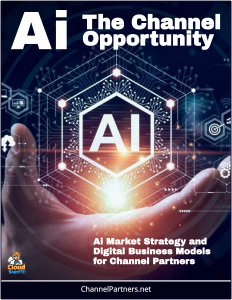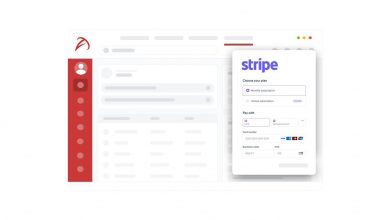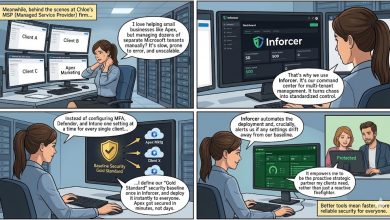SAP chief AI officer discusses how its AI agents are driving return on investment
Philipp Herzig emphasizes that “AI is an application feature,” prioritizing real-world business outcomes over purely technological advancements.
 SAP’s AI strategy revolves around embedding artificial intelligence deeply into its enterprise software ecosystem to enhance business processes, drive efficiency, and empower organizations to operate as intelligent, adaptive enterprises.
SAP’s AI strategy revolves around embedding artificial intelligence deeply into its enterprise software ecosystem to enhance business processes, drive efficiency, and empower organizations to operate as intelligent, adaptive enterprises.
Under the banner of “SAP Business AI,” the company aims to integrate AI capabilities across its portfolio—spanning finance, supply chain, procurement, human resources, sales, marketing, and IT—to deliver what it calls “relevant, reliable, and responsible” AI solutions.
This strategy is rooted in a practical, application-focused approach, as articulated by SAP’s Chief AI Officer, Philipp Herzig, who emphasizes that “AI is an application feature,” prioritizing real-world business outcomes over purely technological advancements.
Core Pillars of SAP’s AI Strategy
Embedded AI Capabilities: SAP integrates AI directly into its applications, such as SAP S/4HANA, SAP SuccessFactors, and SAP Concur, to enhance existing workflows rather than requiring standalone AI implementations.
For example, AI in SAP Concur automates expense reporting, while SAP S/4HANA leverages predictive analytics to optimize supply chain operations. This embedded approach reduces adoption barriers by delivering AI as a seamless part of the cloud-based services customers already use, with less than 1% of its 27,000 active AI users relying on on-premises systems.
- Joule: The AI Copilot: Central to SAP’s strategy is Joule, a generative AI copilot launched in 2023 and expanded in 2024 to include collaborative AI agents. Joule acts as a natural-language interface, enabling users to interact with SAP systems intuitively—asking questions, retrieving insights, or triggering actions across applications like SAP SuccessFactors or Microsoft 365. By late 2024, SAP enhanced Joule to support 80% of the most common business tasks, positioning it as a conductor that orchestrates specialized AI agents to execute complex workflows.
- Collaborative AI Agents: SAP is pioneering the use of “agentic AI,” where multiple autonomous AI agents—each an expert in a specific domain like finance, HR, or supply chain—collaborate to solve multi-step business challenges. Introduced at SAP TechEd 2024, these agents operate within Joule’s framework, leveraging SAP’s Knowledge Graph and Business Data Cloud to understand business context and act reliably. Initial use cases include dispute management (e.g., resolving invoice discrepancies) and financial accounting (e.g., automating ledger updates), with plans to expand across functions.
SAP Business Technology Platform (BTP) as the AI Foundation: SAP positions BTP as the backbone for its AI offerings, providing a scalable platform for both embedded AI and custom AI development.
The Generative AI Hub within SAP AI Core allows developers to access large language models (LLMs)—including open-source options like Meta’s Llama 3.1 and Mistral’s models—while the SAP HANA Cloud vector and knowledge graph engines enhance data processing and contextual understanding. This foundation supports both prebuilt AI scenarios and bespoke agent creation via Joule’s agent builder.
Responsible and Contextual AI: SAP emphasizes ethical AI, adhering to UNESCO’s AI ethics principles and ensuring data privacy through role-based access governance. Joule and its agents are grounded in a customer’s specific business data, reducing AI hallucinations and delivering contextually relevant outcomes. Partnerships with tech giants like NVIDIA, Microsoft, and Google Cloud bolster this by providing enterprise-grade LLMs and advanced computing power.
Bringing AI Agents to the Enterprise
SAP’s approach to introducing AI agents to enterprises is both pragmatic and transformative, aligning with its goal to shift customers to the cloud via initiatives like RISE with SAP. Here’s how they’re doing it:
- Autonomous Workflow Execution: SAP’s AI agents are designed to handle complex, cross-functional workflows without constant human oversight. For example, in a payment dispute scenario, agents specializing in collections, invoicing, and customer support collaborate to analyze data, propose resolutions, and update systems—all within seconds. This reduces resolution times from hours to moments, as showcased in SAP’s finance-focused agent use cases launched by the end of 2024.
- Customization and Scalability: Through Joule’s agent builder, enterprises can create custom agents tailored to their unique processes, leveraging SAP’s 50 years of business expertise encoded in the Knowledge Graph. Prebuilt agents address common challenges (e.g., hiring automation in HR), while the library of over 1,300 skills—covering SAP and third-party apps—ensures scalability and adaptability.
- Breaking Silos: By connecting agents across departments, SAP enables a holistic approach to problem-solving. For instance, a supply chain agent might coordinate with a procurement agent to adjust orders based on real-time demand forecasts, all orchestrated by Joule. This mirrors the vision of an interconnected enterprise where data and processes flow seamlessly.
- Cloud-Centric Delivery: SAP ties its AI agent strategy to its cloud platforms, arguing that on-premises systems lack the agility for modern AI demands. The 25% cloud revenue growth in Q2 2024, with Cloud ERP Suite up 33%, underscores the success of this push. Joule’s full potential is reserved for cloud users, incentivizing migration to SAP’s modern architecture.
- Strategic Partnerships: Collaborations with NVIDIA (for generative AI foundry services), Microsoft (for Copilot integration), and open-source communities (for LLMs like Llama) enhance SAP’s agent capabilities. These partnerships ensure agents are powered by cutting-edge models and can operate across hybrid environments, such as querying Outlook from Joule.
Impact on Enterprises
SAP’s AI agents promise to elevate enterprise productivity by automating routine tasks, accelerating decision-making, and fostering innovation. Companies like Chobani (automating expense processes) and Delta Air Lines (personalizing talent experiences) exemplify early successes. With 130+ AI scenarios available and 400 planned by the end of 2025, SAP aims to cover every business function, offering up to 90% faster task execution for navigational and transactional activities.
In essence, SAP’s AI strategy transforms enterprises into “augmented” organizations—where humans focus on strategy and creativity while AI agents handle execution and analysis. By embedding these agents into familiar tools and grounding them in rich business context, SAP is not just adapting to the AI era but redefining how enterprises operate, making them more agile, intelligent, and competitive.



